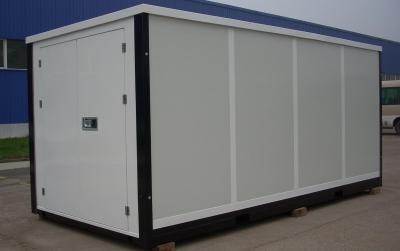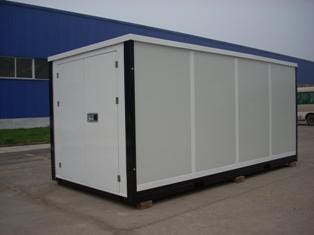As the mobile market has gained tractionand market sharein the industry, it makes sense that traditional self-storage operators would take the opportunity to evaluate augmenting their facilities with a mobile component.
April 12, 2011

By E. George Johnson
Self-storage has evolved from the basement and attic, to remote mini warehouses, to mobile or portable storage. As the mobile market has gained tractionand market sharein the industry, it makes sense that traditional self-storage operators would take the opportunity to evaluate augmenting their facilities with a mobile component.
Portable self-storage is still a relatively young concept. It was created primarily to add convenience for the storage customer. The storage bin, or in this case the portable container, is brought to the renters home or business for the customer to pack at his convenience. Eliminated are the trips to the fixed facility to unpack goods, which might have included hiring a moving company or renting a truck. 
For self-storage operators, there are several investment opportunities when it comes to portable storage, including onsite portable containers and pickup and delivery of portable containers.
Onsite vs. Pickup and Delivery
If a facility operator has space available, inside or outside, he can augment his facility with the placement of portable containers and charge rent at a figure close to that of traditional storage units. Customers would bring their goods to the facility and unload and store as with the current structure, however, some components of convenience could be added. The renter could drive right to his unit and unpack. Or the portable unit could be brought to a convenient spot within the warehouse for unloading and loading. This would require a forklift with the capability of handling the loaded containers.
Operators can migrate even further into the portable-storage arena by incorporating delivery and pickup of the portable container at the renters location. This means additional investment in employees, including drivers and delivery personnel, trucks to accommodate delivery and pickup, warehouse space, and a forklift. It also creates another revenue stream with delivery and pick-up charges and, possibly, a premium for the portable component.
This enables an operator to become a fully integrated storage provider with static portable and incorporate the moving element. If goods are stored in a portable container and arrangements have been made with a moving provider, this can be an added service and revenue stream. There are companies that will provide the moving service to operators and the containers for these transactions. The operator would receive fees based on the initiation of the action and amount to be moved.
The quickest and easiest way to incorporate the portable element into an existing self-storage operation is to purchase or lease portable containers and place them in available space within the facility. This can create a rental stream rather quickly, and the cost per square foot vs. a build-out is substantially less. Building codes and regulations and permits would also not be required. Instant self-storage becomes a reality as soon as the containers are placed and customers start renting. Flexibility is a key element here as well. If the space is needed for another reason, the containers can be moved. Also, if business slows or becomes less than expected, theres a secondary market for selling the containers, so an operator doesnt have to worry the investment will be a complete waste.
Making the Investment
There are a number of factors an operator must analyze before adding the portable component to an existing storage business. Obviously, knowing ones market and the storage saturation level is key. Another important factor is finding out if there are existing portable providers already offering the full service of delivery and pickup, or even moving services. If there are already several portable-storage providers in the market, this may not be a good investment for the operator at this time.
The biggest determining factor, however, is the investment required and probability of potential financial returns. If an operator has an established storage operation in one or several geographic locations, then knowledge of the market and experience within the industry is already there.
Investments in portable containers can be easily researched and determined depending on the number of containers and relative costs. The key question then becomes if the operator can purchase and place portable containers easily and quickly to attract customers. If so, it may warrant a closer look at this financial investment.
E. George Johnson is a principal with Universal Storage Containers. Headquartered in New Canaan, Conn., the company specializes in manufacturing portable, foldable storage containers for various storage and moving industries worldwide. For more information, call 800.385.0755; e-mail [email protected] ; visit www.universalstoragecontainers.com .
You May Also Like





